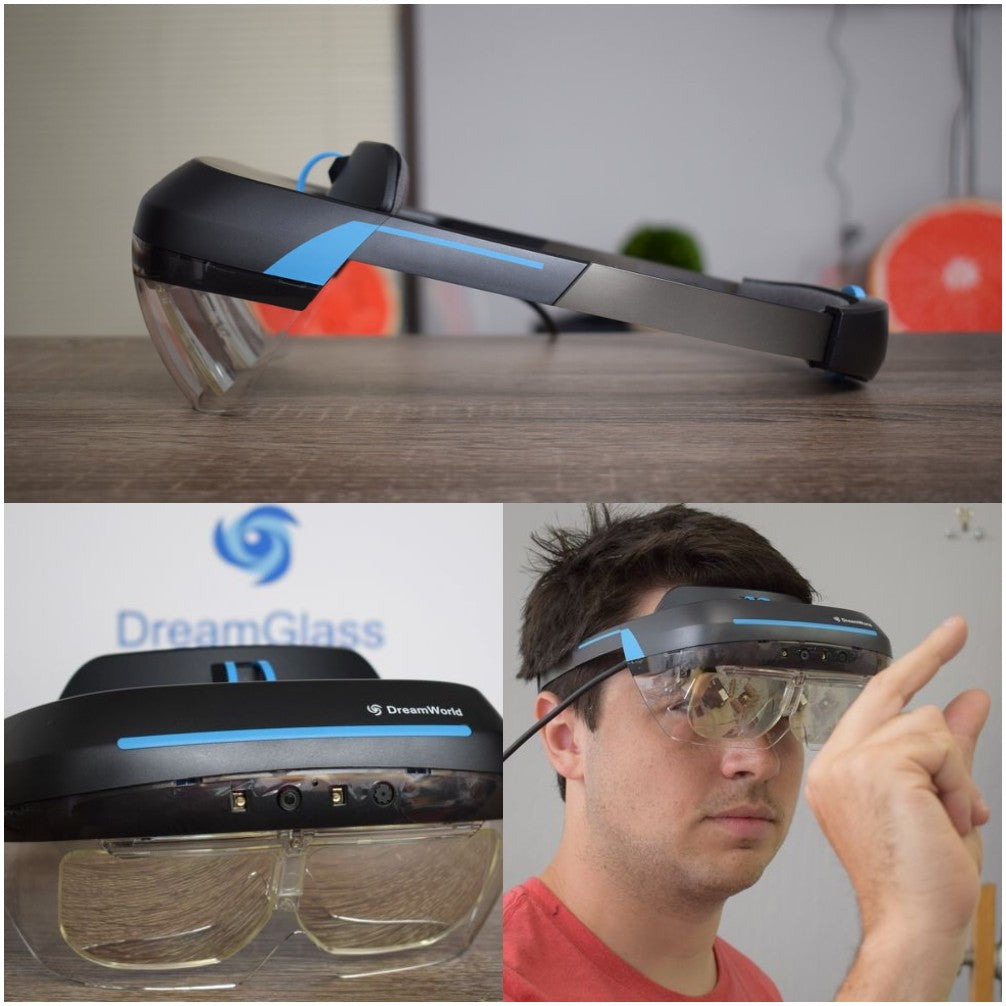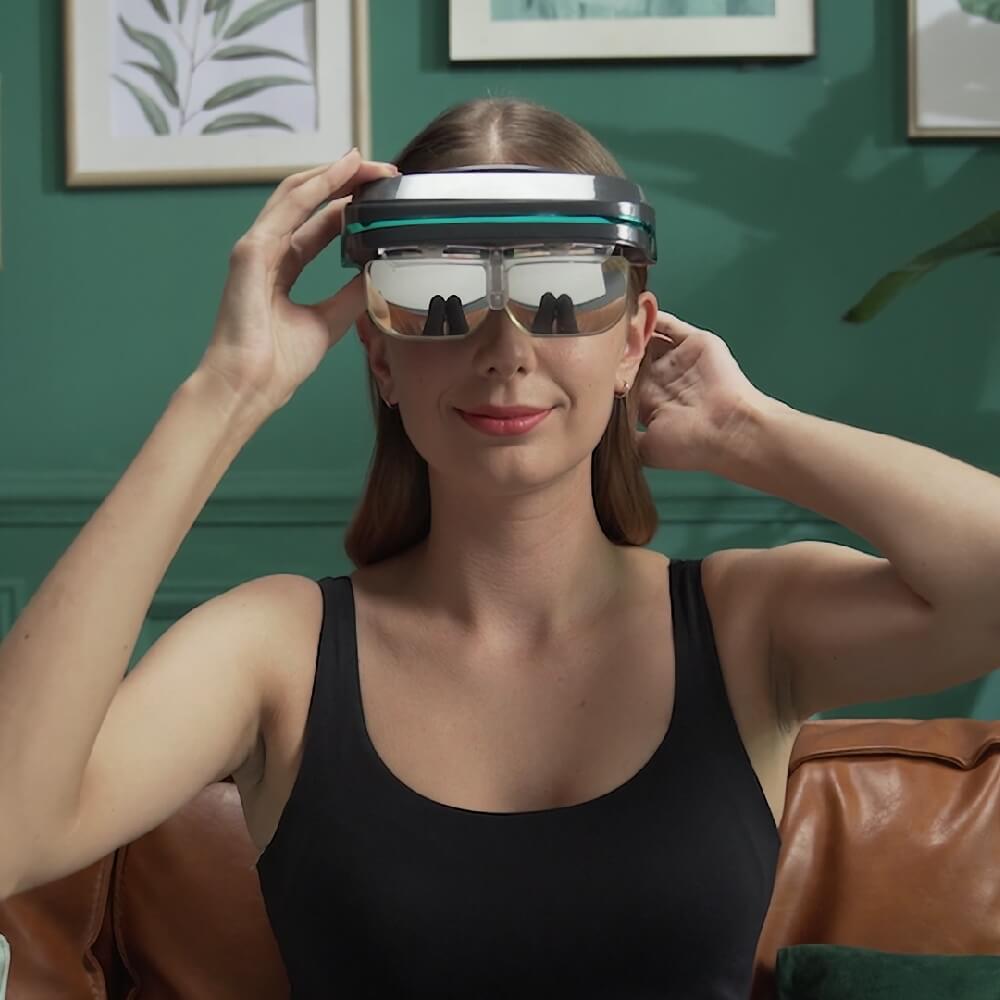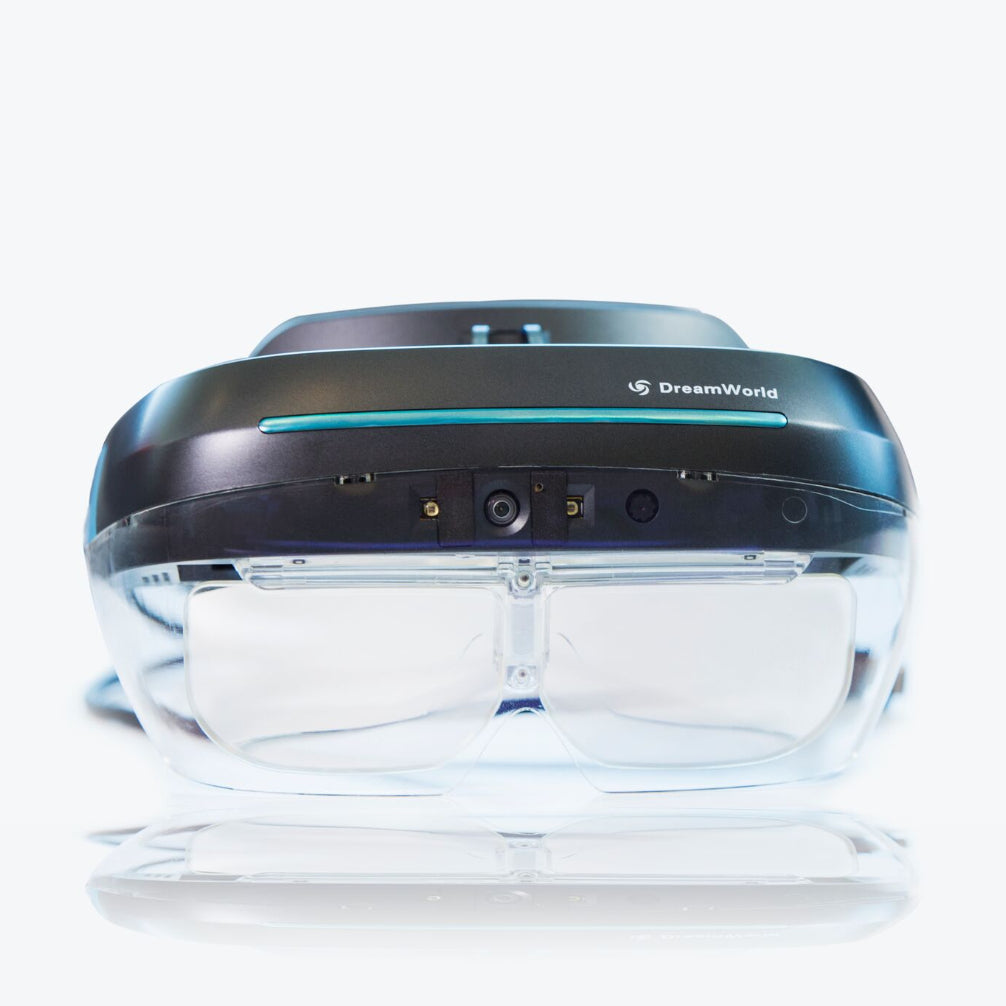By Hugh Langley
There are some really impressive things happening with augmented reality right now, but for most of us it's all being powered by the smartphone. AR headsets are prohibitively expensive and mostly being targeted at developers. Meta's latest headset, the Meta 2, costs $1,500, while the HoloLens starts at $3,000. That's not accessible pricing, even at a stretch.

So enter DreamWorld to try and remedy the problem. The company, founded by a former Meta executive, has created an AR headset called DreamGlass that's currently available as a developer kit. It costs just $399, but compromises on visual fidelity much less than the price might suggest. With a resolution of 2.5K, a 90-degree field of view, 1080p RGB camera and built-in gesture control, it's not cutting many corners on the specs.
Where it does compromise, however, is in how it gets its power: the DreamGlass runs off an Android smartphone via a USB-C or, if you prefer, a PC. Where the HoloLens manages to pack everything into the headset, the DreamGlass outsources much of the work to the gadget already living in your pocket.

The first thing I noticed when putting on the headset was how light it was – one of the upsides of not having a battery to stick inside. At first I tried it tethered to a phone, itself connected to a battery pack. It sounds like a convoluted setup, but not massively more so than the Magic Leap will be when it finally arrives.
Being tied to a smartphone also means you're portable, so I was able to get up and walk around with the DreamGlass on. It's not the type of thing you'd leave the house wearing, but it feels good to wear an AR headset and not feel tied to one spot.
So firstly, you're probably wondering how the AR looks. We've seen a lot of AR that's promised a lot only to disappoint us with grainy, faded holograms. After a little bit of adjustment I got the DreamGlass image looking clear – and it looked good. Images were clear and colours were vibrant. More impressive though was that wide field of view. 90 degrees is on par with the Meta 2, but significantly better than the HoloLens's measly 35 degrees. This makes the holograms better appear part of the room, rather than contained to an awkward box.
Positional tracking held up reasonably well: a model of a beating heart managed to just about stay put as I moved my head about the room. It was a little jittery – we've certainly seen better – but it wasn't bad.

However, tracking is only done with three degrees of freedom, less than the 6DoF you'll get on the HoloLens or systems like the HTC Vive. The company says it's working on with partners on a 6DoF system, which it's looking to introduce in future development kits and would take better advantage of being able to roam free.
DreamWorld has created its own gesture control system here too. Selecting an option from the menu screen requires putting out a hand and closing it – like imitating a duck – to make selections. It was hard to get this right, and though I felt like I'd got a better hand on it by the end of my demo, responsiveness felt inconsistent.
After getting to grips with the holograms, I loaded a trailer for Zootopia that looked surprisingly sharp on the display, although I can't say I'd ever want to watch a full movie on this thing. There was also a Pokemon Go knock-off that was awkward as hell (and definitely infringes on some IP). As this is just a developer kit, the random selection of demos and tidbits seem to be there to inspire creative minds, rather than show off the headset's potential.

DreamGlass's SDK is compatible with Unity, a game engine familiar to many developers. In theory this should make it easier to develop for and encourage developers already building in Unity to get their creations working with DreamGlass.
Right now face-worn AR is finding most its traction in the workforce, and DreamWorld says it's whipping up some interest in the healthcare space right now. AR is proving its worth in that domain, and the prospect of a headset that performs much like the HoloLens for less than a quarter of the price obviously has a lot of appeal.
By keeping its profit margins low, DreamWorld is trying a different tack in order to get its headset in the hands of the masses – now it's down to the developers to do interesting things with it.




